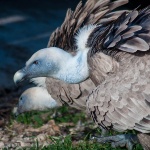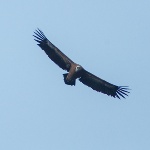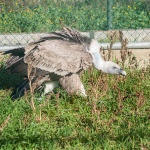Life Under Griffon Wings
Griffon
In Sardinia out of three large vulture species present until the mid-twentieth century (Aegypius monachus, Gypaetus barbatus and Gyps fulvus), only the Griffon vulture (Gyps fulvus) has survived until today. Distributed over the whole island up to the late 1940s with an estimated population of 800 – 1200 individuals, the population of Griffon vultures in Sardinia dropped very rapidly after the Second World War, mainly in relation to the use of poisoned baits, outlawed in 1977.
In 1975 the estimated population counted only 100 – 140 Griffon vultures (Schenk et al. 2005). In central-eastern Sardinia the Griffon vulture was present up to 1980s, thereafter the population survived only in the north-western part of the Island.
Despite several conservation efforts carried out during the last 40 years, the survey conducted in 2013 counted only 30 territorial pairs, located in the Bosa area (SPA ITB023037, which is comprised within the SCI ITB020041). One territorial pair is still present in Capo Caccia - Alghero (SCI ITB010042). ApplyingIUCN criteria, the species has been classified as critically endangered (CR) at a national and regional level, and as secure within EU. The area of the sub-populations in Italy is currently limited to Sardinia, all the others are present as a result of reintroduction projects, and at the moment depend on the presence of supplementary feeding stations for their survival.
The species in our country, has suffered a considerable decline in the last century. Overall, it can in fact be said that in three generations (about 50 years), the population of Griffon vultures in Italy decreased by at least 83.6% (from 580 individuals estimated in 1955 to 95 in 2005, Gustin et al. 2009a). The number of pairs decreased by 96.9% since the 1930 to 2005 (75 years).






